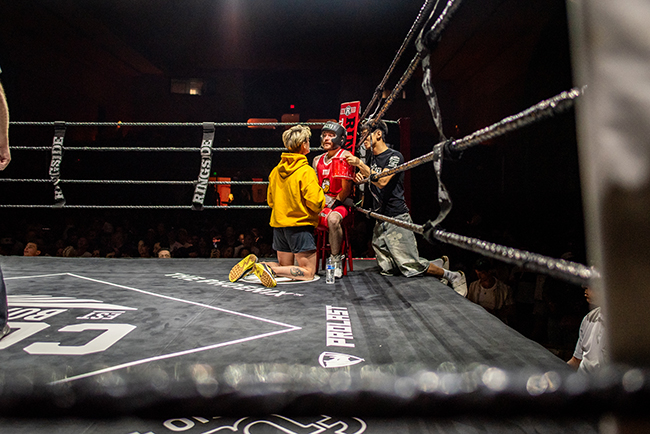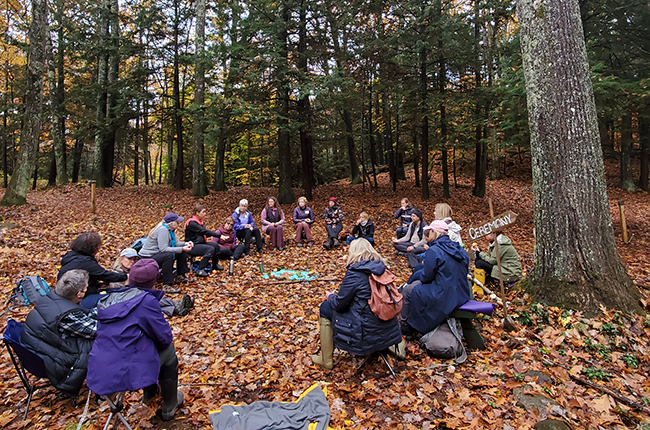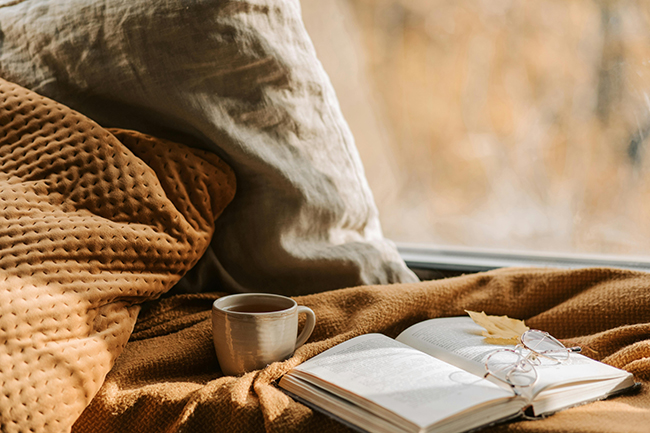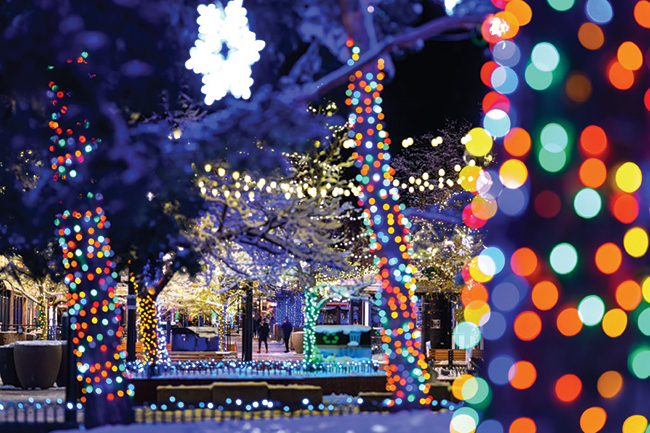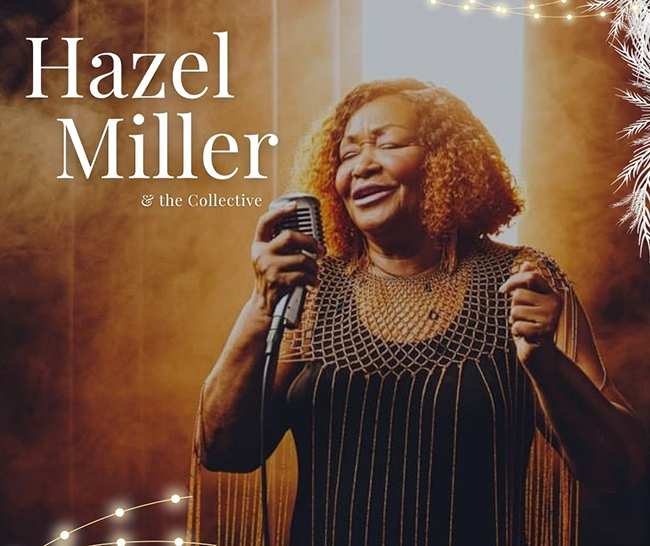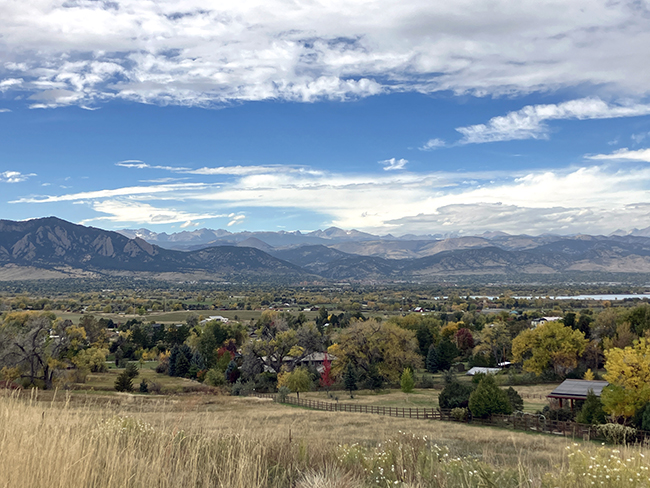Collective Healing
05 Aug 2025
What started as rebuilding morphed into an exercise in reparation
By Amanda McCracken
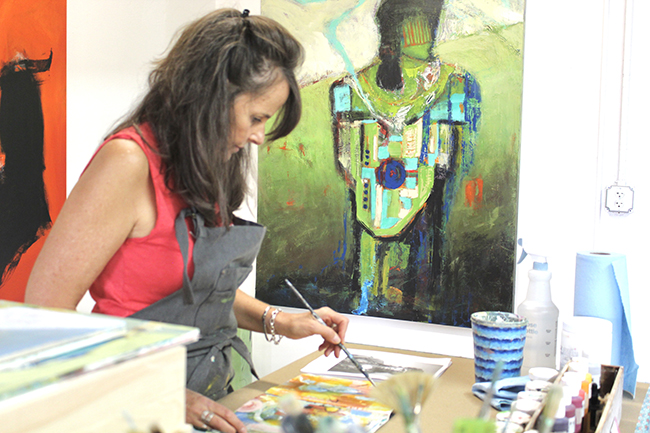
At 45 years old, licensed psychotherapist and artist Kathleen LeRoy found herself down a road that wasn’t what she’d expected her life to be. Her marriage had fallen apart, and she’d lost her home in Boulder, where she’d lived with her two children.
After “emptying out” what wasn’t of value anymore in her life, what was left was a curiosity about being an artist and working with color.
“We all have this programming that we get, and it doesn’t always serve us. I needed to go back and clean all that out so that I could show up for myself, for what I really love to do and for my children. I started rebuilding from there, and the art helped me to do that,” LeRoy says.
One of the primary reasons she became a psychotherapist was to help people rediscover the passions they’re aligned with. This time, she did it for herself. She began taking a class with local artist Jacque Michelle, and her career as an artist quickly took off.
LeRoy’s work begins with intention. She usually lights a candle and reads text that helps direct her. One example is, “We create our art so we may inhabit it ourselves,” which comes from Rick Rubin’s book, “The Creative Act.”
LeRoy describes her paintings as mostly abstract works that explore the light and dark in all of us. As a colorist, she employs an array of intense and contrasting colors to bring the paintings to life. She hopes her artwork has a transmission quality about it, meaning the viewer receives some sort of healing through the painting via the healer in her. Native American artist Earl Bliss inspired her through his ability to transmit through his paintings.
“It can’t be about what’s going to sell. It can’t be about fear of what someone else is going to think about it. As soon as I go anywhere near those things, I’ve lost that channel of possibility for it to be something raw that might transmit something,” LeRoy says.
The thing about setting a positive intention—just like the contrast of light and dark—is that positive must have negative to exist. One negative aspect LeRoy explores through her art is the collective unconscious guilt and shame associated with family lineage. “We project our unconscious guilt and shame onto others, and then we judge, label, exclude and mistreat them,” she explains about racism. LeRoy knows this guilt and shame personally—it’s the very reason she pursued studying psychotherapy decades ago. She grew up in the Deep South in north Florida, where her ancestors owned plantations and enslaved more than 1,000 people. Her complicated family history inspired her “Over One Thousand” project.
LeRoy draws inspiration for this project from American author and psychotherapist Resmaa Menakem, who wrote “My Grandmother’s Hands: Racialized Trauma and the Pathway to Mending Our Hearts and Bodies.”
In addition to her intention, LeRoy’s work is shaped by what she calls “we space”—an invisible space that creates a bridge to connect us, our history and the land we inhabit. She gives the example of having an experience with nature here in Colorado. It’s this space, between herself and nature or a stretch of time, that inspires her artwork. For her pieces related to the “Over One Thousand” project, she often meditates on a historical photo taken from one of the plantations.
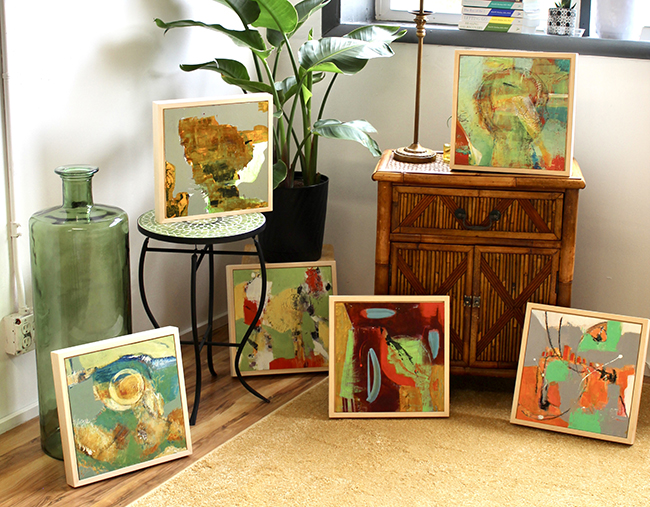
She plans to turn this project into an exhibit in the South, where, in addition to her paintings, cotton fabrics would be incorporated to reflect the cotton plantations along with audio and video footage from interviews with descendants. Visitors to the exhibit would have the opportunity to do constellation work, a form of therapy designed to heal generational trauma. The project is still evolving. In September, she will be joining a relative to meet some of the descendants of the enslaved people.
“As a white woman, I am not trying to be a hero or the white knight. Rather, I am creating this exhibition as an effort to heal my own unconscious guilt, which has been passed down to me from my ancestors and accumulated in this lifetime. I believe this is the only way to stop the victim-perpetrator cycle. Maybe the exhibition can help others like me do the same,” she says.
Learn more about LeRoy and her “Over One Thousand” project at kathleenleroyart.com

